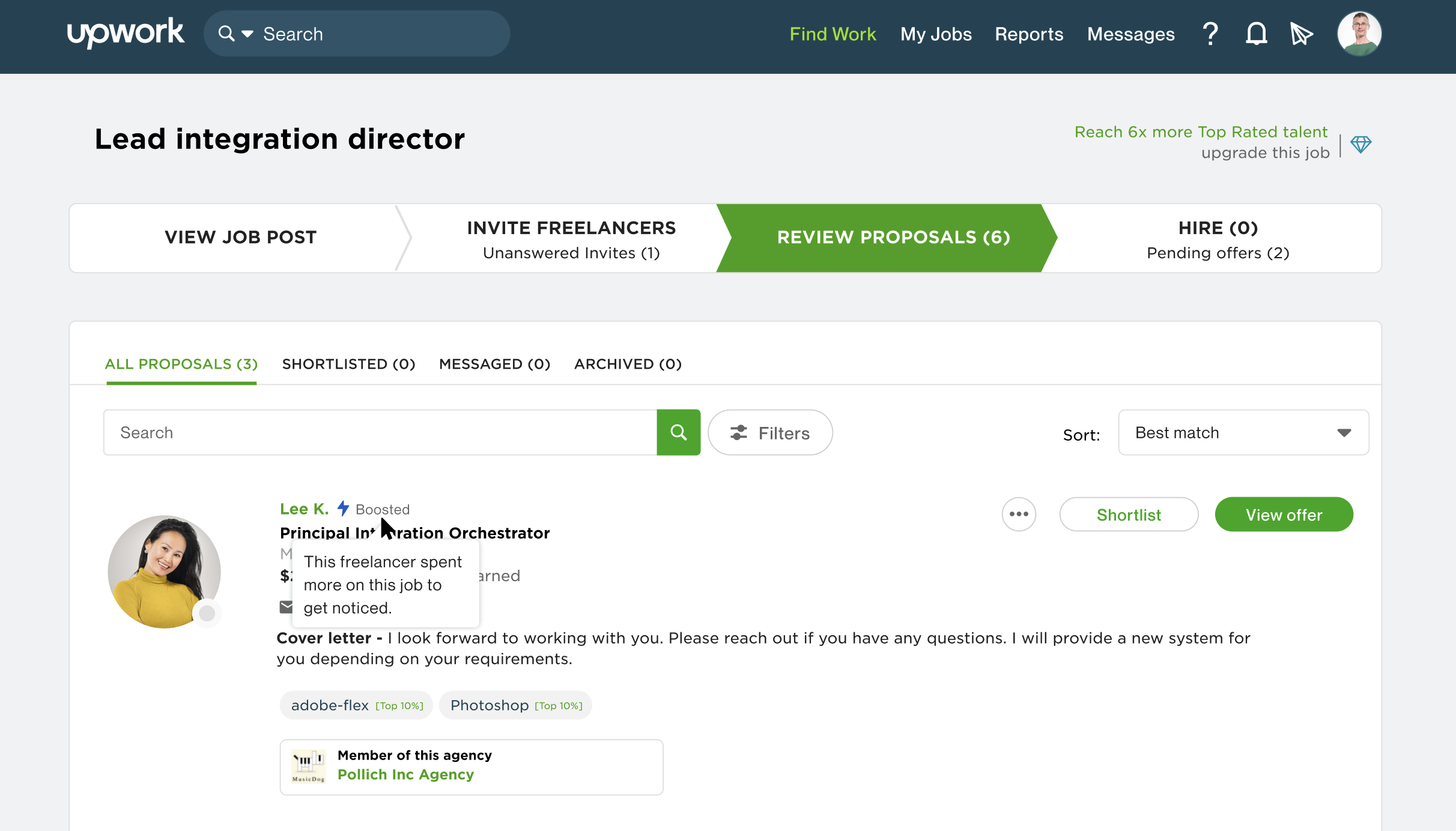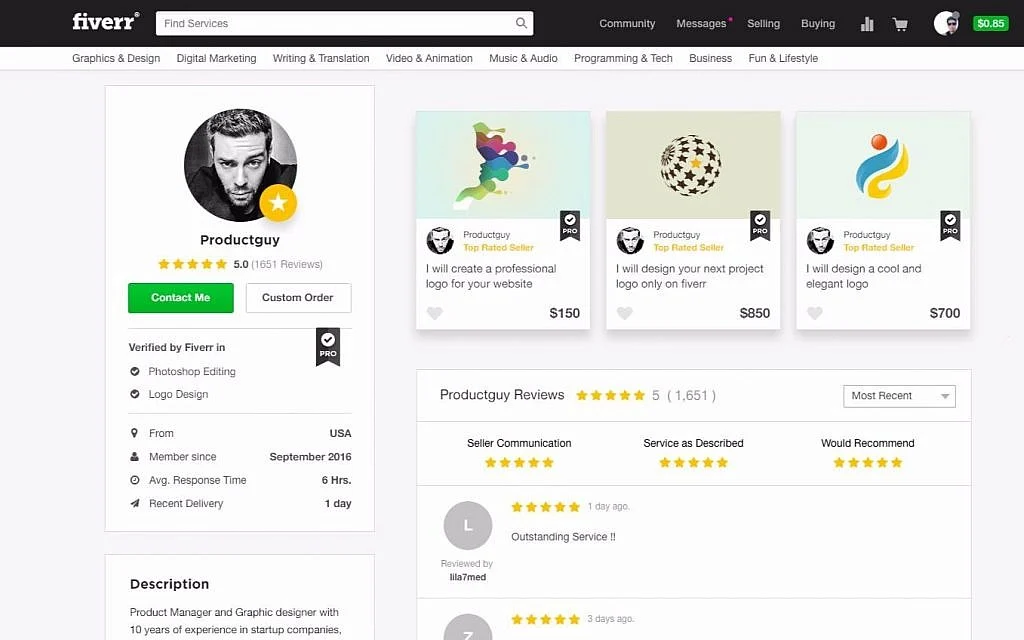
How to Create a Winning Freelancer Profile
Crafting a captivating freelancer profile is your golden ticket to success. It showcases your skills, establishes trust, and lures clients hunting for top-notch talent. Each detail shines a light on your skills in the busy freelance world. Let’s make your profile an irresistible magnet for opportunity!
**Step into the world of freelancing with confidence, whether you’re a novice or a seasoned pro. This guide is your treasure map, leading you to actionable tips for crafting a standout freelancer profile. Learn how to write a catchy bio and find tips for creating an impressive portfolio. Your freelancer profile is your brand. Use the right keywords to improve your visibility and attract clients in 2025.
Quick Guide: Freelancer Profile Essentials
- Choose the right freelance platform for your skills
- Write a keyword-rich headline and compelling bio
- Showcase your best work in a professional portfolio
- Set competitive, research-backed rates
- Optimise visibility with relevant search keywords
- Maintain a polished, honest, and up-to-date profile
- Leverage positive client reviews to build trust
Pro Tip
Use real-world metrics in your bio and portfolio. Instead of just saying you “write blog posts,” say you “helped a client increase blog traffic by 40% in three months.”
Important
Your freelancer profile is often your first impression. Treat it like your personal website. Clients won’t scroll past a clear, confident, and well-optimised profile.
Step 1: Choose the Right Freelance Platform

Top Platforms for Freelancers
Before crafting your freelancer profile, you must choose the right platform based on your skills and goals. Some of the best freelance job platforms include:
- Upwork – Ideal for writing, marketing, programming, and design professionals.
- Fiverr – Best for selling specialised services as gigs.
- Freelancer – A good choice for a broad range of projects and competitions.
- PeoplePerHour – Excellent for UK-based freelancers.
- Toptal – Best for experienced freelancers in tech, finance, and design.
Selecting the right platform ensures that you target clients who value your expertise and improves your chances of success in freelancing with no experience.
Step 2: Optimise Your Profile Headline

Your profile headline is the first thing clients see, so it needs to be clear, engaging, and informative. A well-crafted headline improves your freelancer profile SEO, making you more discoverable in searches.
Tips for Writing a Strong Headline:
- Keep it short and to the point (under 10 words).
- Highlight your core skill and unique value proposition.
- Use relevant freelance profile keywords to make your profile more searchable.
Examples of Strong Freelancer Headlines:
- “SEO Copywriter | Expert in Content Marketing”
- “Full-Stack Developer | Specialising in React & Node.js”
- “Graphic Designer | Branding & Logo Design Specialist”
Step 3: Write a Compelling Bio
Your freelancer bio is where you sell yourself to potential clients. It should be engaging, professional, and clearly explain what you offer. Knowing how to write a compelling bio can make a massive difference in attracting high-quality clients.
How to Write a Compelling Bio:
- Start with a strong introduction – Grab attention with a concise summary of your expertise.
- Highlight your experience – Mention relevant projects, industries, or skills.
- Showcase your unique value – Explain how you can help clients achieve their goals.
- Add a call-to-action – Encourage potential clients to contact you.
“I’m a seasoned SEO copywriter with over five years of experience. I specialise in crafting compelling, keyword-driven content that boosts traffic and engagement. I work with startups, e-commerce brands, and big companies. I create impactful blogs, website copy, and marketing materials. Ready to elevate your content strategy? Contact me today!”
Step 4: Build an Impressive Freelance Portfolio
Clients want to see proof of your work before hiring you. A strong freelance portfolio showcases your best work and effectively demonstrates your skills. Building a freelance portfolio is key to landing high-paying projects.
What to Include in Your Portfolio:
- Work Samples – Upload past work relevant to your niche.
- Case Studies – Show measurable results from previous projects.
- Testimonials – Include client reviews to build credibility.
- Certifications – Display relevant credentials to enhance trust.
Where to Host Your Portfolio:
- Personal Website (e.g., WordPress, Wix, or Squarespace)
- Behance or Dribbble (for designers)
- GitHub (for developers)
- Medium or LinkedIn Articles (for writers)
Step 5: Set Competitive Rates
Pricing yourself correctly is crucial to attracting clients while ensuring your services are valued appropriately.
Factors to Consider:
- Industry Standards – Research rates for your niche on freelance platforms.
- Experience Level – Charge more as you gain expertise and positive reviews.
- Project Scope – Offer tiered pricing (basic, standard, premium) for flexibility.
Step 6: Use Keywords to Improve Visibility
Many clients search for freelancers using platform-specific search functions. Optimising your freelancer profile with the right freelance profile keywords will improve your chances of being found.
Where to Use Keywords:
- Profile headline
- Freelancer bio
- Portfolio descriptions
- Skill tags
Examples of effective freelance profile keywords include:
- “SEO content writer”
- “UX/UI designer”
- “Python developer”
- “Social media marketing expert”
Step 7: Maintain a Professional & Engaging Profile
Your freelancer profile should reflect professionalism and approachability. Follow these best practices:
- Use a Professional Profile Photo – A high-quality headshot builds trust.
- Be Clear & Honest About Your Skills – Avoid exaggeration.
- Update Your Profile Regularly – Keep your experience and portfolio fresh.
- Respond to Messages Promptly – Timely replies improve client trust and ratings.
Step 8: Leverage Client Reviews & Ratings
Positive client feedback is one of the most powerful elements of a successful freelancer profile.
How to Collect Reviews:
- Ask satisfied clients to leave a rating and testimonial.
- Deliver high-quality work to build a strong reputation.
- Offer incentives like a small discount for a review (if platform rules allow).
Good reviews boost your ranking on freelance platforms. They also build trust with potential clients.
Top 5 FAQs: Freelancer Profile Creation
1. How long should my freelancer bio be?
Aim for 150 to 300 words. It should be long enough to showcase your skills and experience, but concise enough to keep attention.
2. Should I list every skill I have?
No. Focus on your core strengths and skills relevant to the type of work you want to attract. Quality over quantity.
3. Can I still get hired if I don’t have portfolio samples?
Yes. Start by creating mock projects or offering discounted work to build up examples and testimonials.
4. How often should I update my freelancer profile?
Every few months or after major projects. Keeping your profile fresh signals active engagement to potential clients.
5. What’s the best way to stand out from other freelancers?
Use a niche-focused approach. Tailor your headline, bio, and portfolio to a specific industry or problem you solve exceptionally well.
Your Path to Success: Craft a Standout Freelancer Profile!
A standout freelancer profile is your golden ticket to quality projects. With these savvy tips, you’ll craft an irresistible bio. Hone your skills in portfolio building, and watch your appeal soar. Distinguish yourself from the crowd and connect with your dream clients.
Begin optimising your freelancer profile today. This will help you succeed in the growing freelancing industry!
Need help improving your profile? Drop your questions in the comments below!


